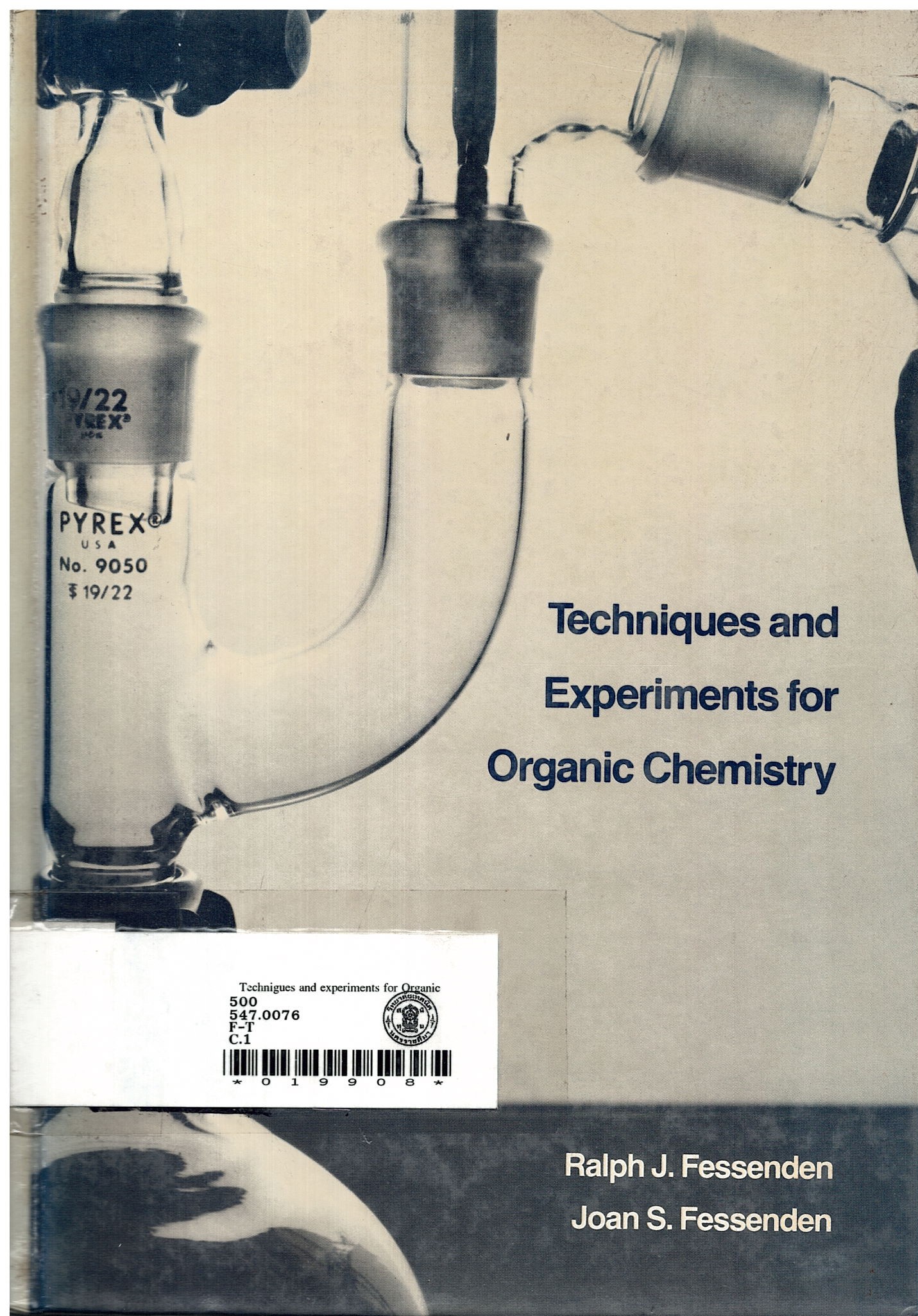ข้อมูลทรัพยากร

Technigues and experiments for Organic Chemistry.
ประเภททรัพยากร : หนังสือเล่ม
ชั้นเก็บ : ตู้ 9 ชั้น 5 ฝั่งขวา
หมวด : 500
เลขหมู่หนังสือ : 547.0076
สำนักพิมพ์ : Brooks/Cole Publishing Company.
ผู้แต่ง : Fessemden, Ralph J.
ยอดคงเหลือ : 1
เนื้อหาย่อ : Two general approaches often used in teaching the one-year introductory
organic laboratory are the investigative approach, a tutorial method that prepares
the student for research, and what we call the "techniques approach,"' a more
structured method in which the student is generally first taught manipulative
techniques, then synthesis, and finally organic qualitative analysis. We have chosen
the techniques approach because we feel it is more efficient of time and energy
(both the student's and the instructor's) in our own chemistry sequence, in which
students take lecture and laboratory courses concurrently.
Techniques and Experiments for Organic Chemistry begins with the common
laboratory techniques. Actual syntheses are postponed until the student has gained
sufficient knowledge of organic chemistry from the lecture portion of the course
understand the experiments being performed. Synthetic work follows the
echnique chapters of the text and begins with alkyl halide chemistry (Williamson
ether synthesis and a Grignard reaction), followed by alcohol chemistry. Spectral
chniques (infrared and nmr) are placed after alcohol chemistry, approximately
alfway through the text. The remaining chapters are devoted to additional
synthetic procedures. The text ends with a chapter on the literature of organic
chemistry, an introduction to organic qualitative analysis, and a chapter of supple-
ental techniques. Four appendices of assorted tables and laboratory calculations
conclude the text.
Each chapter begins with a theoretical discussion of the chemistry or
techniques contained in the chapter. In addition, each experiment in the chapter
preceded by a discussion of the practical aspects of the experiment, along with
planations of why each reaction or manipulation is performed as it is. Emphasis
placed on understanding and doing instead of just doing.
The amount of procedural detail in the experiments is reduced as the text
progresses. At the start of the book, the steps to be followed are spelled out in
detail. The detail provided is gradually diminished as the student proceeds through
the course and gains laboratory experience. Toward the end of the text, the
experimental detail is similar to that found in research journals. Therefore, the
periments in the chapters toward the end of the text call for more student
genuity: for example, Experiment 16.4 (Synthesis of an Acetate Ester by a
General Reaction Procedure) and Experiment 21.1 (Qualitative Organic Analysis:
Selected Procedures).